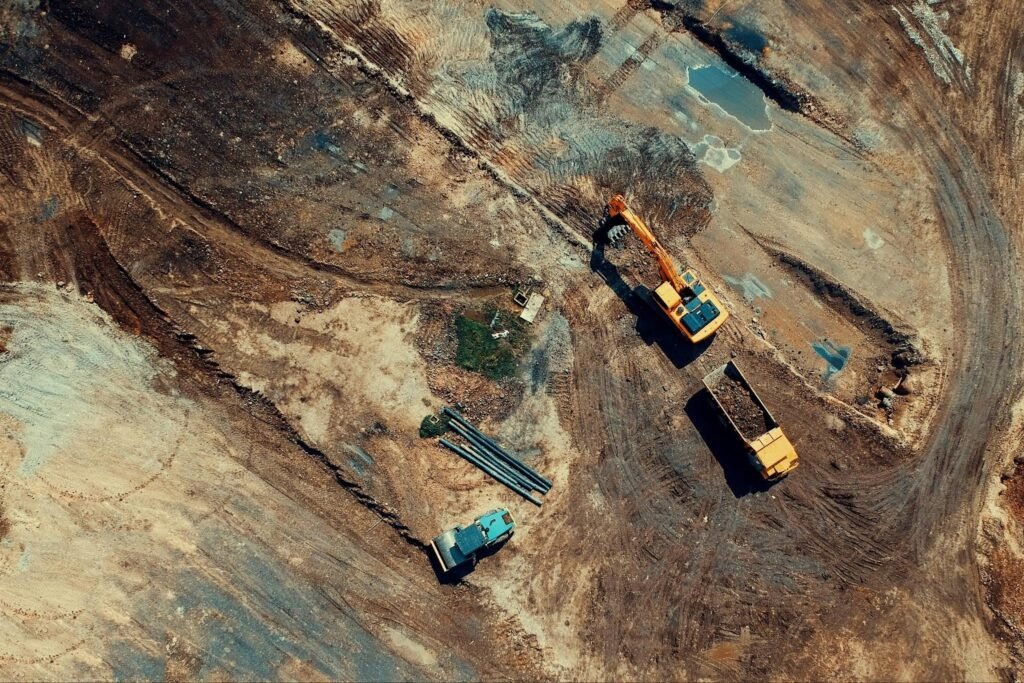The modern construction site is a very busy place indeed, and if you’re new to the business, it can be pretty overwhelming at first. Moving from smaller-scale project management to operating your first site is a big deal, and while you can learn a lot of theory by reading textbooks and researching online, most learning necessitates an on-the-job approach.
That said, you should definitely acquire as much information as you can about the fundamentals before you begin, and today, we’re going to cover just that. Here are 10 important elements of streamlining your operations.
Image Credit: Pexels
1. Always Start With a Clear Plan
It may seem like it goes without saying that you need a solid plan before you begin, but given how often a project grinds to a halt because of poor initial organization, it’s something that needs reiterating.
Your overall goal should be split into several key (and manageable) milestones and also include elements like resource allocation and health and safety precautions. Project management software can help you brainstorm, and it allows several people to collaborate at once.
2. Invest Wisely in Your Equipment
The industrial machinery for a construction site typically comes in two categories: the foundational arsenal you bring to every site and new, specific bits of gear you’ll need for that specific task.
For the latter category, you’re usually better off renting where you can, unless it’s something you know you’ll use for several other jobs. You should also prioritize fuel-efficient equipment – you have a duty to protect the environment, and this will also save you money in the long run.
3. Prioritize On-Site Logistics
A large part of the efficiency of any given construction site is how on-site logistics are taken care of. There are many different components under this umbrella, from waste management to space optimization – make sure you go over everything with a fine-tooth comb before you begin, and carefully monitor things during the first week to discover any weak points.
And remember: poor logistics management doesn’t only lead to lower efficiency, it also leads to more accidents.
4. Understand Environmental Control
Environmental control is a very important element within any construction site. Construction produces a lot of heat, vapour, and harsh chemicals into the environment, so you need a method of containment to protect the local area and your workers.
Modern environmental control solutions are incredibly sophisticated, enabling the user to modulate both heating and cooling as well as manage ventilation. These features can also be customized to the job at hand. They allow you to operate safely no matter what task is being conducted, and they’re a major factor in preventing the most prevalent environmental concerns in this industry.
5. Utilize Data Analytics
Data analytics are becoming an important part of most industries, and construction is no different.
Modern sites are advised to use Internet of Things (IoT) technology to track a variety of key metrics, as the data from these systems can then be analysed to improve efficiency at a deeper level. Advanced sensors can tell you much more than you could hope to understand yourself, so they’re most certainly a worthwhile investment.

Image Credit: Pexels
6. Offer Training for Your Staff
While you’ll need to make sure all of your staff are suitably trained for whatever job they’re tasked with, training goes beyond that.
As is the case with all industries, construction is constantly evolving, and you need to make sure your workforce stays ahead of the game in regard to new technologies, methods, and safety regulations. Inefficiency in this area can quickly slow progress, so stay on top of it.
7. Carefully Consider Worker Comfort
While ensuring worker safety is a given, it’s also important that your staff are comfortable. Construction sites can be cold, wet, and dirty, so beyond the basic safety measures, you should be making sure uniforms and personal equipment are of high quality and well-maintained, and that you have transportation from one area to another if you’re running a large site.
A happy workforce is a productive one – you want your staff to enjoy their work.
8. Use Modular Construction Methods
Modular construction is a great way to improve your efficiency, and it can also reduce costs. By pre-forming parts of a given build, you can reduce labor and minimize the complication that comes with building directly onsite.
These days, virtually everything can be constructed in a modular fashion and then delivered to the site via cranes, lifts, and trucks. Take a look at your plan at the start of each project and consider where you might be able to implement these techniques.
9. Form Strong Relationships with Your Suppliers
As someone who runs a construction site, you’ll need to learn how to form relationships and negotiate.
This industry is all about collaboration, and establishing trusted partnerships is crucial for getting the best deals and having your products and materials delivered as and when you need them. Your suppliers will also be making their own efforts to innovate in their respective areas, and they’ll be able to pass these benefits onto you. Prioritize making the right connections, and don’t just go with the first company you come across.
10. Embrace Life-Long Learning
One of the best things you can do to improve the working efficiency of your construction site is to embrace lifelong learning. It’s common for many leaders in this industry to rest on their laurels, so admitting what you don’t know and continually looking for ways to improve puts you ahead.
At the end of each project, thoroughly assess what went well and what could be made better, so that you can then build on that experience for next time. This is how good leaders operate. Stay humble and eager to learn.
Wrapping Up
Learning how to properly run a construction site will take a lot of time and effort, but the above tips should get you off to a good start. With consistency and commitment, each project completed will go smoother than the last. Good luck!







